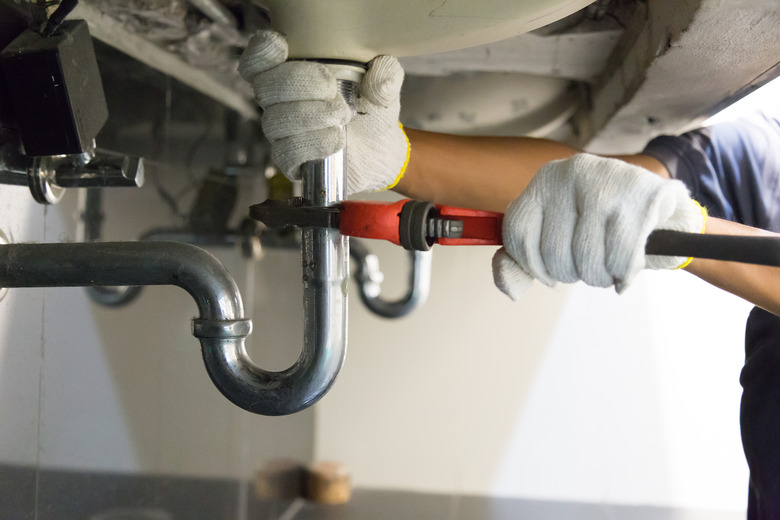What Is A Plumbing FPT?
FPT stands for female pipe thread, and it is synonymous with female pipe taper, female national pipe taper and female national pipe thread. FPT refers to the female end of a pipe, and the male end screws to connect the two pipes. If you are undertaking any sort of home plumbing project, you might encounter the acronym, so it is important to know the difference between pipe end types
Tip
An FPT is the female end of a pipe with threads on the inside. Threaded pipe joints have male and female ends.
What Are Pipe Threads?
What Are Pipe Threads?
Pipe threads are grooves along the ends of a pipe that allow it to secure to the threads of the fitting. Before modern-day soldering and gluing techniques, and even before copper pipes became the standard for residential plumbing, galvanized steel pipes were the plumbing standard. They were connected by screwing the male and female pipe ends together.
Because of this, pipe threads were standardized — and still are — by the American National Standards Institute (ANSI) to simplify plumbing; however, there are still many classifications of pipe threads.
There are eight common classifications for hydraulic pipes: United National Fixed Pitch Series (UN), United National Fine Series (UNF), National Pipe Threads (NPT), National Pipe Taper Fuel (NPTF), British Standard Pipe Parallel (BSPP), British Standard Pipe Tapered (BSPT), Metric Parallel and Metric Tapered.
National Pipe Threads and FPT
National Pipe Threads
and FPT
Defined by the ANSI, National Pipe Threads (NPT) are the most common general-use pipe threads in the United States. They are featured on both pipes and fittings. They have tapered threads on the ends and are used for joining and sealing pipes intended for fluids, low-pressure air, gas and for mechanical applications.
There are two types of ends for NPT threads: male pipe threads (MPT) and female pipe threads (FPT). Whenever the terms MPT and FPT are used, they refer to male and female ends with NPT threads. Male fittings will have their threads on the outside, while female fittings have their threads on the inside.
Finding the Right FPT Size
Finding the Right FPT Size
It's important to choose the right pipe size. Note that dimensions provided usually refer to the dimensions of the fittings, not the measurements of the pipe.
The thread size measurement indicates the inner diameter (ID) of the pipe. It is referred to as a "nominal" thread size since the indicated size is often an average and not exact. The smaller the nominal size is, the further the ID deviates.
To determine the size of the female pipe threads, measure the outside diameter at the top of the fitting. Even though the inside diameter determines the pipe thread size, the outside diameter will correlate with the correct size. For example, if the outside diameter is 3.5 inches, the correlating pipe thread size will be 3.
Identifying Pipe and Pitch Types
Identifying Pipe and
Pitch Types
If you need to connect pipe, you should first make sure that you are dealing with NPT pipe threads. Look closely at the threads — do they run parallel or tapered?
NPT, NPTF, BSPT and metric tapered pipe threads will always run tapered, meaning that the pipe threads will get smaller in diameter as they reach the end of the fitting. If you are in the United States, chances are you are dealing with NPT or NPTF pipe.
The pitch is the number of threads within a given distance. Use a pitch gauge against a lighted background to determine the pitch. Next, determine the size by measuring the outside diameter of the fitting — the opening at the top — and cross-reference the measurement with a nominal size chart. Lastly, cross-reference your gathered information with a thread chart to confirm that you are dealing with NPT pipe threads.
Connecting MPT to FPT
Connecting MPT to FPT
To connect the MPT to the FPT, tape the MPT with thread seal tape, applying the tape in the opposite direction of the threads. Twist it onto the fitting and then tighten the pipes with a wrench to further secure the connection. If done correctly, there should be no leakage.
